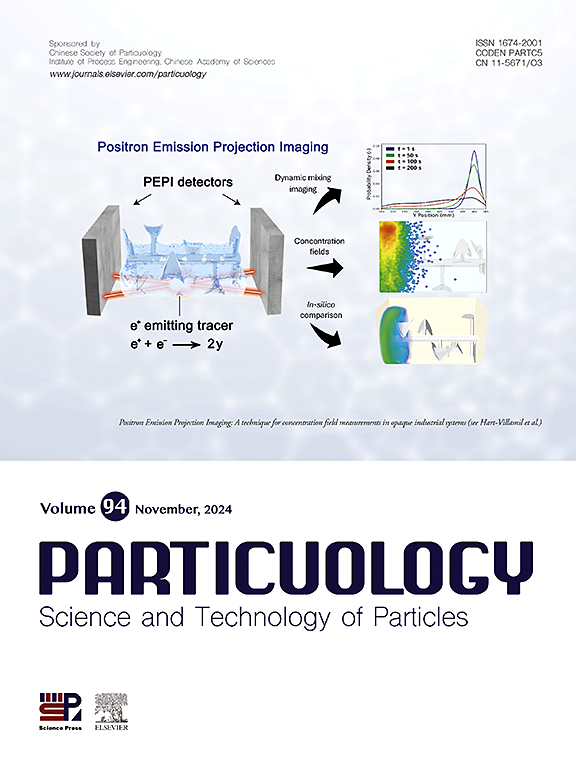Green synthesis and eco-biological evaluation of Ag/Fe bimetallic nanoparticles using Vallaris solanacea leaf extract targeting insecticide resistance
IF 4.1
2区 材料科学
Q2 ENGINEERING, CHEMICAL
引用次数: 0
Abstract
The emergence of insecticide resistance presents a major challenge in pest control and agriculture, while the use of conventional pesticides raises environmental and health concerns. This study addresses these issues through the green synthesis of Ag/Fe bimetallic nanoparticles (BMNPs) using Vallaris solanacea plant extract and evaluates their eco-biological activities. The synthesized Ag/Fe BMNPs, with an average size of 30 nm as determined by SEM, were characterized by UV–Vis spectroscopy, FTIR, EDX, and SEM. In vitro assays revealed significant anti-inflammatory (91%), antioxidant (95%), anti-diabetic, anti-hemolytic, and antimicrobial activities. Additionally, the nanoparticles demonstrated 100% mortality against Sitophilus oryzae (rice weevil) and exhibited 97% degradation of the pesticide Novacide, indicating potent pesticidal and environmental remediation capabilities. Computational analysis, including molecular docking and molecular dynamics simulations, revealed strong interactions between Ag/Fe BMNPs and insecticide resistance (IR) proteins, with binding energies surpassing those of traditional pesticides, suggesting an ability to circumvent resistance mechanisms. These findings highlight the potential of Ag/Fe BMNPs as a sustainable, eco-friendly alternative for pest management and environmental applications in agriculture and beyond.

抗虫缬草叶提取物银/铁双金属纳米颗粒的绿色合成及生态生物学评价
杀虫剂抗药性的出现对虫害防治和农业构成重大挑战,而传统杀虫剂的使用引起了环境和健康方面的关切。本研究通过利用缬草提取物绿色合成银/铁双金属纳米颗粒(BMNPs),并对其生态生物学活性进行了评价。通过紫外可见光谱、红外光谱、EDX和扫描电镜对合成的Ag/Fe BMNPs进行了表征,SEM测定其平均尺寸为30 nm。体外实验显示具有显著的抗炎(91%)、抗氧化(95%)、抗糖尿病、抗溶血和抗菌活性。此外,纳米颗粒对米象虫(稻象鼻虫)的死亡率为100%,对农药Novacide的降解率为97%,表明了强大的杀虫和环境修复能力。计算分析包括分子对接和分子动力学模拟,揭示了Ag/Fe BMNPs与杀虫剂抗性(IR)蛋白之间的强相互作用,其结合能超过传统农药,表明具有规避抗性机制的能力。这些发现突出了Ag/Fe BMNPs作为害虫管理和农业及其他领域环境应用的可持续、环保替代品的潜力。
本文章由计算机程序翻译,如有差异,请以英文原文为准。
求助全文
约1分钟内获得全文
求助全文
来源期刊

Particuology
工程技术-材料科学:综合
CiteScore
6.70
自引率
2.90%
发文量
1730
审稿时长
32 days
期刊介绍:
The word ‘particuology’ was coined to parallel the discipline for the science and technology of particles.
Particuology is an interdisciplinary journal that publishes frontier research articles and critical reviews on the discovery, formulation and engineering of particulate materials, processes and systems. It especially welcomes contributions utilising advanced theoretical, modelling and measurement methods to enable the discovery and creation of new particulate materials, and the manufacturing of functional particulate-based products, such as sensors.
Papers are handled by Thematic Editors who oversee contributions from specific subject fields. These fields are classified into: Particle Synthesis and Modification; Particle Characterization and Measurement; Granular Systems and Bulk Solids Technology; Fluidization and Particle-Fluid Systems; Aerosols; and Applications of Particle Technology.
Key topics concerning the creation and processing of particulates include:
-Modelling and simulation of particle formation, collective behaviour of particles and systems for particle production over a broad spectrum of length scales
-Mining of experimental data for particle synthesis and surface properties to facilitate the creation of new materials and processes
-Particle design and preparation including controlled response and sensing functionalities in formation, delivery systems and biological systems, etc.
-Experimental and computational methods for visualization and analysis of particulate system.
These topics are broadly relevant to the production of materials, pharmaceuticals and food, and to the conversion of energy resources to fuels and protection of the environment.
 求助内容:
求助内容: 应助结果提醒方式:
应助结果提醒方式:


